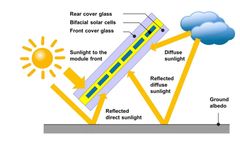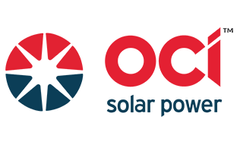Single Axis Tracker Articles & Analysis: Older
15 articles found
Solar irradiance reflected by the ground can be captured by the underside of the modules, which are often mounted on single-axis trackers. Bifacial modules require more space between the arrays to allow direct beam and diffuse sky light to reach the ground and be scattered back to the modules. ...
Because the Array Technologies DuraTrack HZ v3 single-axis solar tracker leverages a centralized design with rows linked by drivelines, it’s often thought of as a less-than-perfect solution for challenging sites, such as those with rolling hills or irregular site boundaries. ...
In choosing how to fight back, PV plants have two core options among single-axis solar trackers – active stow and passive response. ...
Trackers are integral to lower financial risk In the past, more conservative investors and insurers have questioned trackers as a possible risk. ...
But there are still risks… take tracker systems for example. Depending on the design, many single-axis trackers can’t enable built-in weather risk mitigation technology until AFTER construction is almost complete or until the project is commissioned and operational. That efficient workflow to ensure safety and speed ...
Operating and maintaining a utility-scale photovoltaic (PV) solar power plant is a time-consuming and expensive proposition. However, there’s been a unique innovation in PV plant operation – though it comes from a simple and decidedly old-school source. Sheep’s New Role in Lowering PV Plant Operations and Maintenance Costs You read that correctly. Sheep are now being used for ...
Enel Green Power, the operator of the Roadrunner solar farm, selected Array Technologies DuraTrack® HZ v3 single-axis solar trackers for their utility-scale photovoltaic solar plant, helping the plant’s incredible number of bifacial solar panels live up to their expansive power-producing potential. ...
The project uses about 500 acres of land and includes 203,472 modules and 3,768 single-axis tracker rows, servicing about 35,000 homes. This project is also 100% in compliance with the Buy American Act. ...
The project includes approximately 197,000 solar modules on single-axis trackers and provides energy to about 11,250 homes. Construction began in March 2018 and was completed in November. ...
Thus far, bifacial projects have typically used single-axis tracker designs that boost output, separate panels and minimize shading losses. ...
Located on reflective desert land, the project will incorporate LONGi bifacial modules and NEXTracker single axis trackers. Power output from the PERC cell system will be 25% higher than a traditional monofacial module with fixed rack PV system, LONGi said. ...
US solar system cost benchmark 2010-2018 Source: National renewable energy laboratory, Nov. 2018 One-axis tracker utility-scale PV O&M costs fell from $20/kW/year in Q1 2017 to $14/kW/year in Q1 2018, including inverter replacement costs, the National Renewable Energy Laboratory (NREL) said in its latest annual U.S. ...
Single-axis and dual-axis trackers are two of the styles that are often used; each has its share of advantages and disadvantages, so you need to familiarise yourself with them before reaching a final decision. Single-Axis These sun trackers have a ...
The ease of installation for residential customers makes the post driven ground mount a great and simple solar solution, while adding the single and dual axis trackers for year round optimization. This is the all-around perfect residential solar ...
ABSTRACT Herein, a SunTrack Carousel tracker is described for mounting on residential or commercial building flat rooftops in order to produce more k\Vh per kW relative to fixed PV modules. ...







